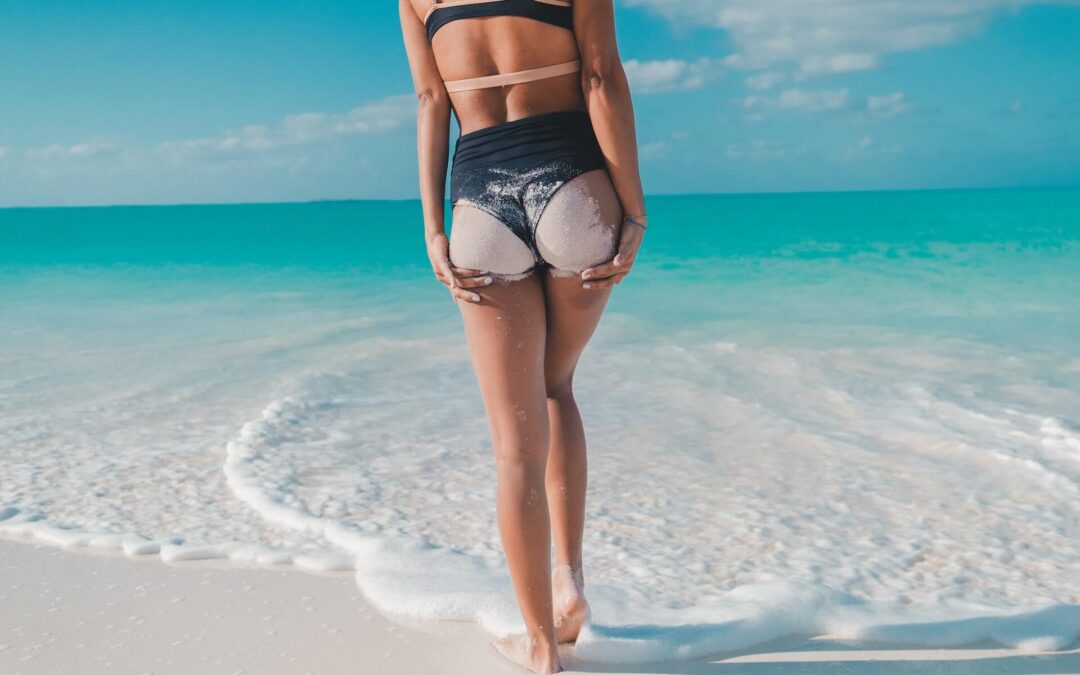Glutes, often underrated, are vital components of your anatomy, ideally being your largest and most powerful muscles. They serve to protect your lower back, hip joint, and pelvis while enhancing various movements such as squatting, deadlifting, jumping, and sprinting. Despite their importance, modern lifestyles often leave glutes underdeveloped, resulting in issues like flabbiness, weakness and compensation in adjacent areas. Weak glutes can lead to imbalances and overload in other muscle groups, increasing the risk of injury and reducing overall athletic performance. However, prioritizing glute strength can mitigate these risks, improve core function, and boost power and athleticism. We’ll explore the significance of strong glutes and provide effective strategies and exercises to sculpt rock-solid glutes that not only look impressive but also function optimally.
In movement, the gluteal contribution increases as the movement moves especially into hip hyperextension. You engage the glutes when lifting, jumping, walking, running, squatting, lunging, changing direction quickly, throwing, or decelerating in rotational movement. Weak glutes lead to increased loads on the lower back and hamstrings. Lower back pain is a common musculoskeletal issue that can be effectively addressed with glute, hamstring, and abdominal strengthening, particularly if it’s strength-related.
Sleeping Pills for the Glutes
- Pain, such as back pain.
- Sitting.. and we do a lot of it.
- Not being active enough, and when we are, we adopt poor movement patterns.
- Muscle imbalances and reciprocal inhibition, such as tight hip flexors.
Here are a few ways that I prefer to train my glutes. Some of these are fairly advanced and specific to athletic movements. If you’re new to strength training, find a fitness professional to teach you correct form and learn regressed versions of these exercises before you jump straight into it. You can also check out my full exercise library with exercises for every ability level at michelledrielsma.com
Glute Strength and Conditioning
1. Barbell Hip Thrusts
Position your back on a bench, rolling a padded barbell back into your hip crease. Extend the hips up to about 10 degrees hip hyperextension, avoiding hyperextension of the lower back or anterior tilt of your pelvis. You should feel this primarily in your glutes, not your lower back. Control the weight up instead of using momentum to swing a weight up which may be too heavy. It is key to maintain a posterior pelvic tilt at the top of the lift.
2. Barbell Glute Bridge
Perform the same movement as described above, but position your back and feet on the ground. Extend the weight up from the hips while ensuring you securely hold the barbell to prevent it from rolling back onto your face.
3. Single Leg Hip Thrust
Perform the exercise with your back on a bench and the working leg on the floor, or alternatively, with the working leg on another bench to increase the range of motion. Aim to maintain a level pelvis and extend to about 10 degrees of hyperextension, as described earlier.
4. Skater to Curtsy Squat
Squat on one leg with your opposite leg moving out to the side (skater), then to the back, and finally crossed behind your body (curtsy). While the video below is shown in double time, perform this exercise at half the speed for optimal results. Aim for 5 reps per side per set.
5. High Step Up
Find a step that is elevated above knee height. Focus on explosive power, lifting your body up as quickly as possible. Tap the ground between each rep and immediately lift yourself back up. If doing 10 reps feels easy, consider increasing the step height or adding weight such as a dumbbell or weight vest.
6. Low Box Squat
When squatting, focus on sitting back, not just down, to maximize the stretch on the squatting muscles. Lower yourself, relax, then contract dynamically by forcefully pushing your hips forward and flexing your glutes to stand up again. With box squats, allowing your shins to go past perpendicular to the floor places stress on major squatting muscles like the hips, glutes, lower back, and hamstrings.
7. Nomad Glute Burner
Perform this routine anywhere using only a chair, bench, sofa, bed, or table. Start with 20-30 single-leg hip extensions (foot elevated), then do 10 hip external and internal rotations. Maintaining a posterior pelvic tilt is key. This is guaranteed to make you feel the burn.
In conclusion, prioritizing the strength and conditioning of your glutes is crucial for optimizing athletic performance, reducing the risk of injury, and achieving overall functional fitness. By incorporating the exercises and strategies outlined in this guide, you can effectively target and develop your glute muscles, leading to improved stability, power, and mobility. Rotate these exercises and don’t just stick to your favourites. Remember that consistency and proper form are key to seeing results, so make sure to grab a coach to ensure you are moving well or contact me. Whether you’re an athlete looking to enhance your performance or simply striving for better overall health and fitness, strong and functional glutes are essential. So, commit to the journey of building rock-solid glutes and reap the numerous benefits they offer in terms of strength, performance, and aesthetics.
